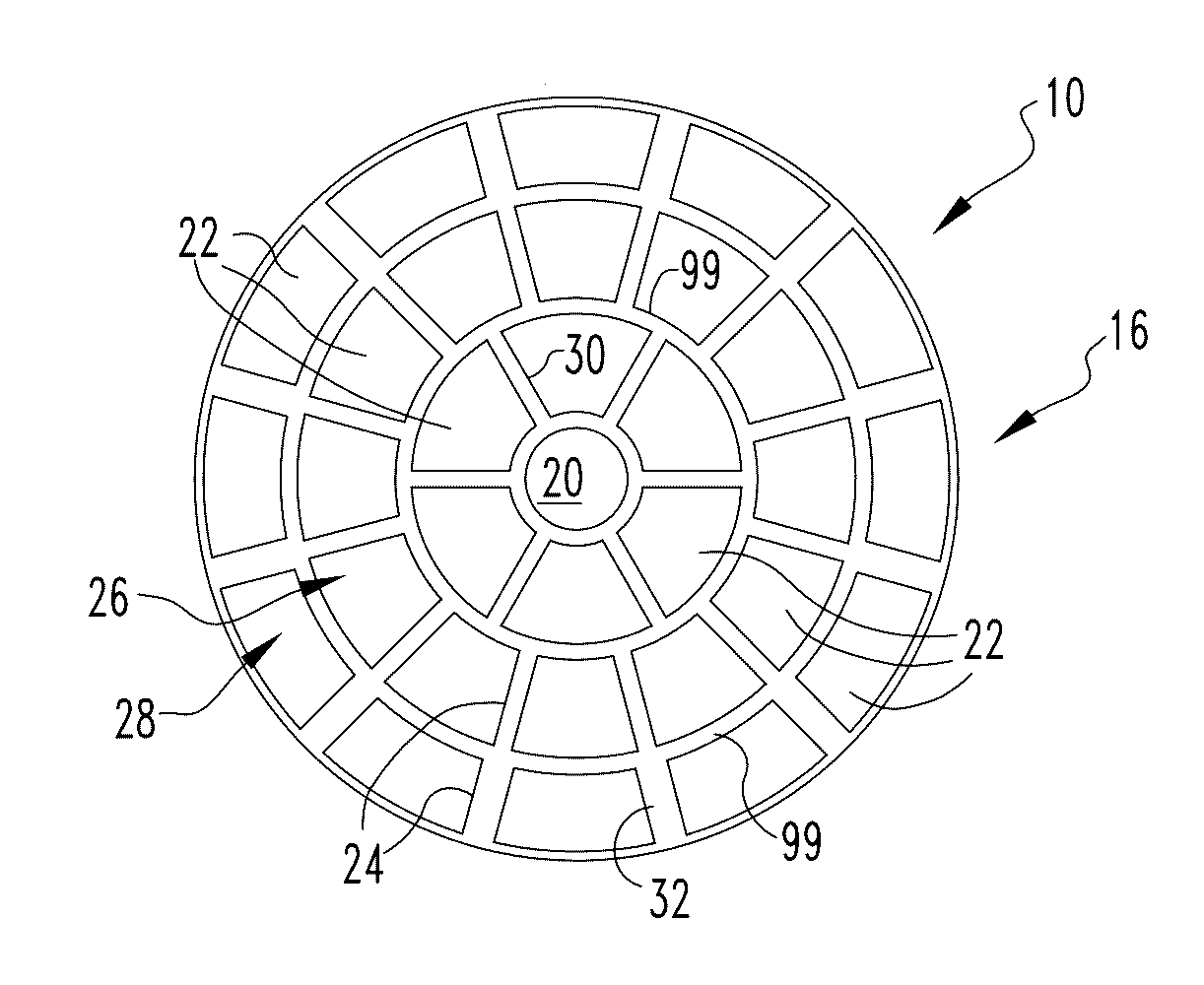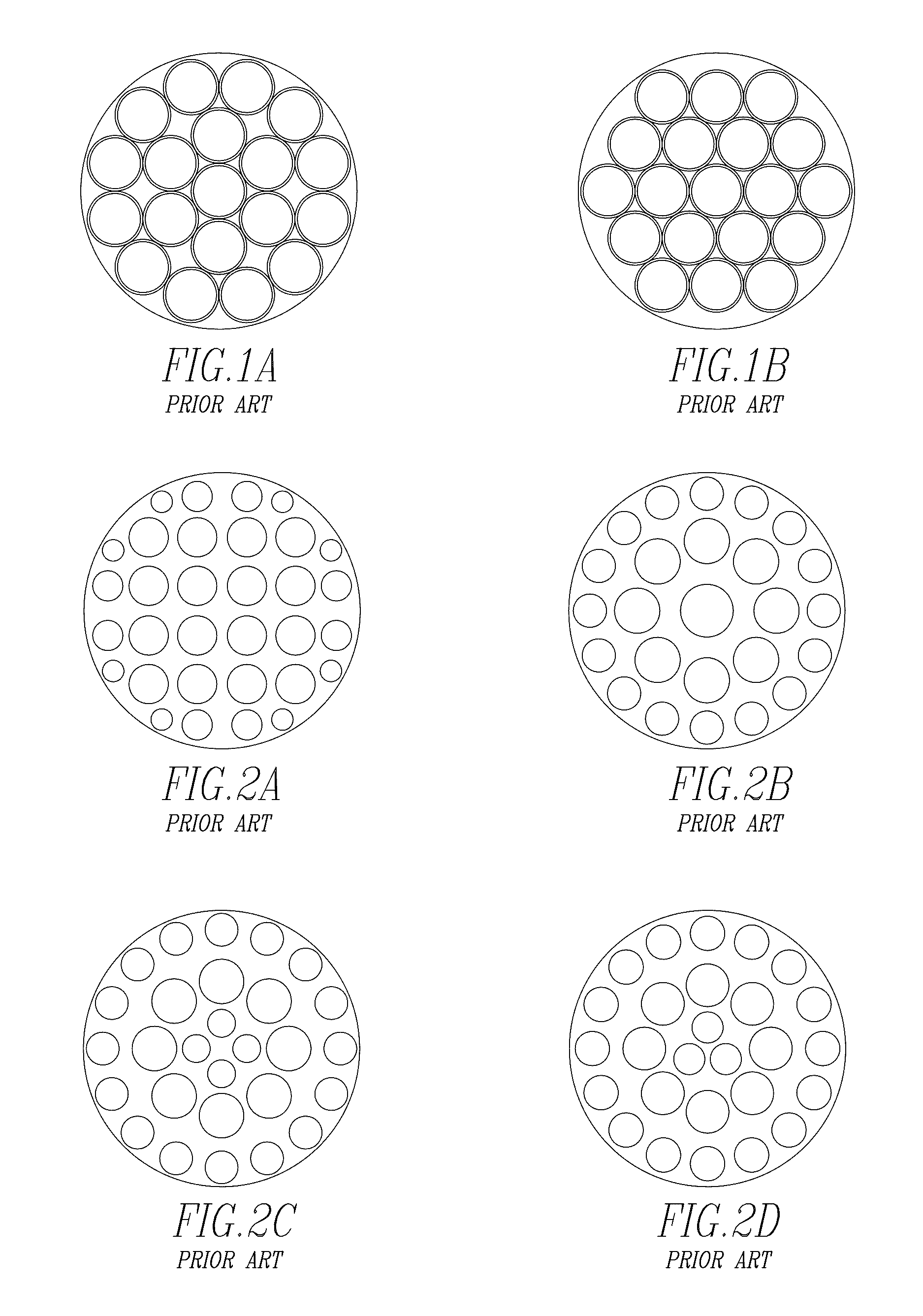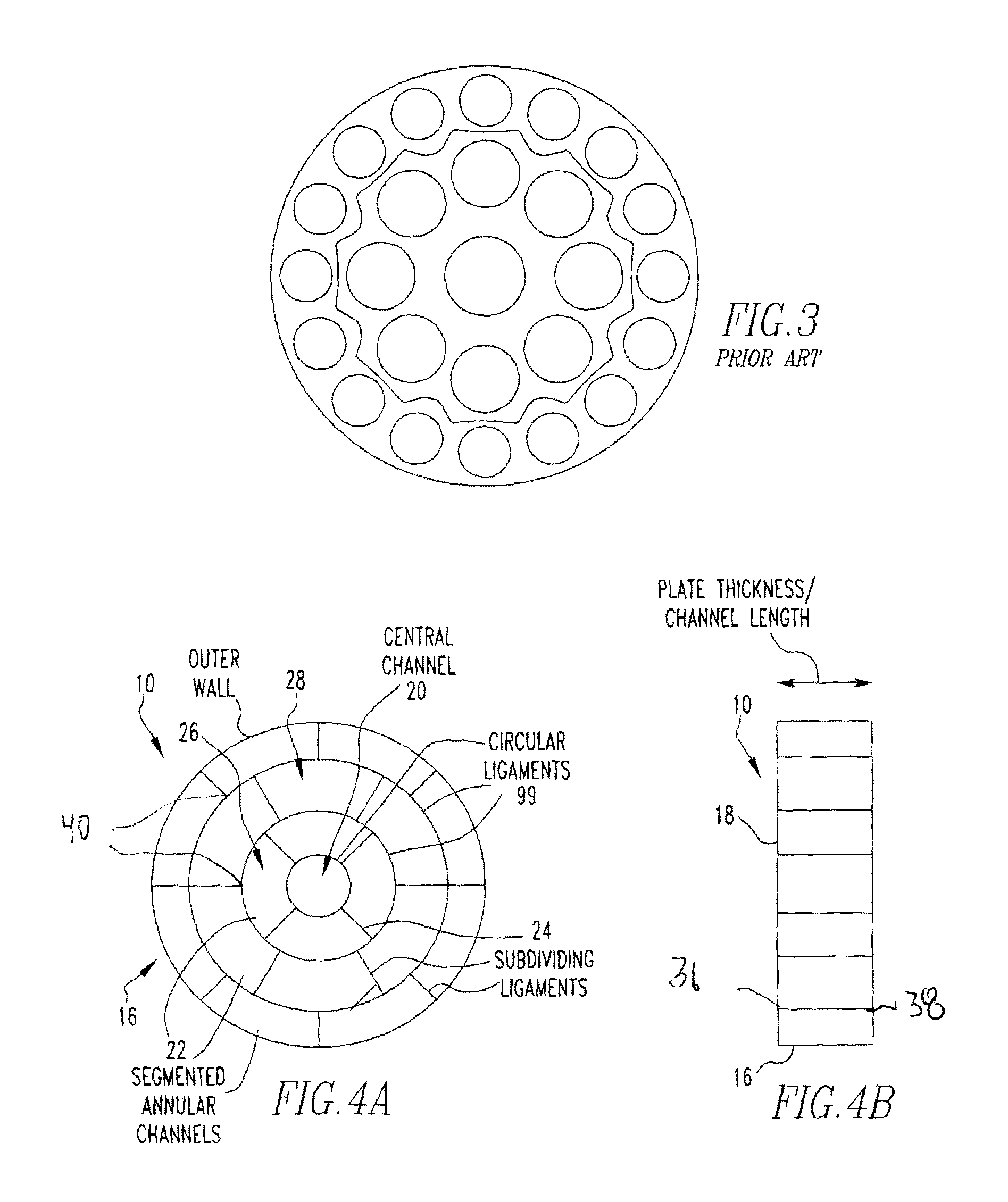Flow conditioner and method for optimization
a flow conditioner and optimization technology, applied in the field of flow conditioners, can solve problems such as inability to adapt to the requirements, affecting the calibration or flow coefficient of certain types of flow meters, and inability to meet the requirements
- Summary
- Abstract
- Description
- Claims
- Application Information
AI Technical Summary
Benefits of technology
Problems solved by technology
Method used
Image
Examples
Embodiment Construction
[0038]Referring now to the drawings wherein like reference numerals refer to similar or identical parts throughout the several views, and more specifically to FIGS. 4a and 4b thereof, there is shown a flow conditioner 10 for a circular pipe 12 having an axis 14. The flow conditioner 10 comprises a plate 16 having a face 18 to be disposed in the circular pipe 12 with the face 18 of the plate 16 perpendicular to the axis 14 of the pipe 12. The plate 16 has a central circular passage area 20 through which fluid flows surrounded by two or more concentric arrays of segmented annular passages 22 for fluid flow defined by separating and subdividing ligaments 24, with at least one array 26 of annular passages 22 having a radial width different than a radial width of a second array 28 of annular passages 22.
[0039]With reference to FIGS. 5a-5c, 7, 9a and 9b, the plate 16 may have at least one subdividing ligament 30 having a width different than a width of a second subdividing ligament 32. Th...
PUM
 Login to View More
Login to View More Abstract
Description
Claims
Application Information
 Login to View More
Login to View More - R&D
- Intellectual Property
- Life Sciences
- Materials
- Tech Scout
- Unparalleled Data Quality
- Higher Quality Content
- 60% Fewer Hallucinations
Browse by: Latest US Patents, China's latest patents, Technical Efficacy Thesaurus, Application Domain, Technology Topic, Popular Technical Reports.
© 2025 PatSnap. All rights reserved.Legal|Privacy policy|Modern Slavery Act Transparency Statement|Sitemap|About US| Contact US: help@patsnap.com



